The Art of Jacinto Guevara: Documenting Unique Latino Cultureby Ricardo Romo First published in Ricardo Romo’s Blog, Latinos in America, November 19, 2021. Reprinted in La Prensa Texas, November 26, 2021. The seventies are remembered as a monumental decade for most Americans. In the early years of the decade President Richard Nixon’s resignation and the Supreme Court decision in Roe v. Wade dominated the news. Earth Day, Godfather movies, and disco music fascinated young people. The advent of the computer revolution marked a major change in society. For Latinos, the decade included significant events as cities across the Southwest experienced school walkouts, and California farmworkers won important union and legislative policy victories. Talented youth introduced Chicano poetry, plays, and film, and universities developed Chicano Studies classes and programs. Chicano artists who grew up during the seventies witnessed great transformations as they saw for the first time a flowering of their own artistic cultural creations. Jacinto Guevara of San Antonio emerged as one of the fortunate individuals who rode the early waves of this artistic movement. His story provides some important insights into one of the most significant eras of Chicano artistic creativity. From an early age Jacinto Guevara discovered that art represented an important means of communicating. Guevara came of age artistically during the early 1970s while attending Belmont High School in East Los Angeles. At the time, few Latinos went to museums but most grew up surrounded by commercial art, usually in the form of billboards and posters. Significantly the early expressions of Arte de La Raza appeared in public art. Chicano art originated with the mural movement in California. Art historians place the birth of Chicano art between 1968-1973. Guevara was a teenager when Chicano artists painted a mural at the headquarters of Cesar Chavez’ United Farm Workers Union in Del Rey, California. Some of the earliest Chicano murals originated in the heart of East Los Angeles, in close proximity to Guevara’s home. When Joe and John Gonzalez decided to convert an abandoned meat market into an art gallery, they recruited two future Chicano art stars, David Botello and their brother-in-law Ignacio Gomez, to paint what UCLA art historians have identified as the first public Chicano mural in East Los Angeles. Muralism became the most prominent creative development of Chicano art. Guevara enrolled at California State University Northridge [CSUN] in 1975, a time when colleges throughout Southern California were reaching out to East Los Angeles students. Guevara had seldom gone to the San Fernando Valley, home of the Northridge campus, but he liked CSUN’s Chicano Studies Program which was in its sixth year. He majored in Ethnic Studies and took classes with famed Chicano historian Dr. Rudy Acuña. Guevara loved music and joined the mariachi band headed by Professor Beto Ruiz. Guevara became a frequent art and cartoon contributor to El Popo, the Chicano student newspaper founded in 1970. After graduation from CSUN in 1980, Guevarra painted on a regular basis and also joined several musical bands. During these years, while Guevarra remained an early aficionado of the emerging Chicano murals in his community, he focused on his drawings and canvas painting. He bought one of his first canvases for three dollars and spent a half day cleaning it. Guevara worked at his art but could not seem to make the right connections to get his paintings in galleries and had a difficult time making a living as an artist. An invitation in 1990 by the established B-1 Galleries in Santa Monica offered him some hope. He was invited, along with several of the leading East Los Angeles artists, including Frank Romero, Wayle Alaniz, and Paul Botello to exhibit his paintings. Although Latino art was gaining in popularity, few of the paintings sold. After that show, Guevara began to think of leaving Los Angeles and was attracted to San Antonio because of the city’s thriving Chicano culture. Guevara found the San Antonio weather suitable for his preference of open air painting, or what the French called “plein air.” Some of his favorite subjects included abandoned railroad stations and warehouses. He delighted in finding unique subjects for his paintings, such as icons and buildings in San Antonio that most observers had overlooked. Many of his paintings reflect the older sections of the East and West side of town. He looked for old houses, residences that did not necessarily catch the public’s attention. These residential structures were simple, but attractive. He told me that these houses “weren’t necessarily pretty.” In 2016 Lewis Fisher published Saving San Antonio: The Preservation of a Heritage. It told a story of the San Antonio Conservation Society’s organized efforts to save historical houses from destruction. Guevara is also “saving San Antonio” through his paintings. His work captures the essence of the city, areas where not all the houses and buildings are spectacular, but they contain meaning and beauty for their owners. Guevara’s structural portraits, such as that of the 1880s building, “Liberty Bar,” which became a hangout for many Chicano artists, capture a heritage that makes San Antonio unique. 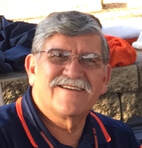 Ricardo Romo is an author, educator, and Latino Art connoisseur. He has degrees from the University of Texas at Austin (BA) and UCLA (PhD).
1 Comment
Hidden Chapters in U.S. History: |
| Salimos muy temprano en la mañana y llegamos en la tarde. Había un jacal de piedra donde nos quedábamos. La casa tenía un techo de paja, pero la mitad del techo estaba caído. En la noche hacia tanto frio que habían carámbanos en las vigas y sobre las ventanas. Yo iba y cojía los carámbanos y se los traía a mamá. We’d leave [the house in Nava] very early in the morning and wouldn’t get there until well into the afternoon. There was a stone hut where we’d stay. It had a straw-thatched roof but half of it was fallen in. The nights were so cold that icicles formed on the rafters and the windows. I used to break them off and take them to mamá. |
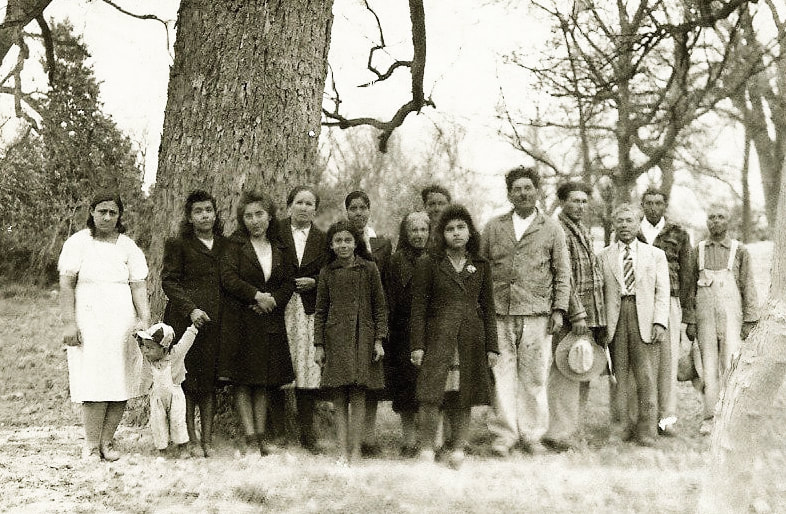
| “Les voy a contar un cuento medio chistoso,” dijo Ventura. “Una vez cuando estaba trabajando en ----, tenía una mujer. Le dije que le iba dejar algo cuando me fuera. Cuando montante mis cosas en el caballo para irme, le dije, “Ven acá para darte tu regalo.” Cuando se acerco, le corte la cara de los dos lados con mi navaja de resurar.’ Y papá le dijo, ‘Si te atreves hacerle un mal a unos de los mios, te juro que te mato.” “¡O no, jefe!” dijo Ventura. “Nunca haría eso.” “I’m going to tell you a funny story,” said Ventura. “Once when I was working at--- (place name forgotten), I had a woman. I told her I’d give her something when I got ready to move on. When [the day came to leave and] I was done loading my horse, I told her, “Come here so I can give you your gift.” When she got close enough, I slashed both sides of her face with my razor.” Papá then said, “If you ever dare to hurt one of mine, I swear I’ll kill you.” “Oh, no, boss!” said Ventura, “I’d never do anything like that.” |
Sometime after that incident, my grandparents went out to Rosales again to bring fresh supplies to the herders. My grandfather noticed some of the animals had separated from the herd and were wandering in the horizon. He immediately set out to retrieve them, and it wasn’t long before Ventura was facing down my grandmother. My mother recalled the moment with terror, as if she were re-living that moment. She remembered his eyes, how they shifted about, a hint of a smile forming on his lips.
“Where’s the boss?” He asked my grandmother.
“Por hay anda,”my grandmother said, meaning close-by, just out of sight.
He looked around quickly. “I don’t see him.”
“He’s here,” she said self-assuredly. She, too, had grown up in desert during the time of the Revolution when young women, especially a young white woman like herself, were the target of rapacious men, revolutionaries and federales alike.
Ventura looked around again, but my grandmother’s cool steadfastness
discouraged him. He took a step back, perhaps remembering my grandfather’s willingness to use his gun. My mother said that when he stepped back, it was as if all of his weight were going forward and he had physically hit a wall. It was unmistakable what he intended to do.
Like all of the transient men of the desert, Ventura was gone not long after.
Even today, straying too far from the springs and troughs can be deadly for cattle. The cowherds guide the cattle back to the ranches or natural springs or to the water troughs. Recently, a cowherd poached some water from us for his herd. He may have been drinking and delayed guiding the cows to their water source. We weren’t mad. The few humans of the desert look out for each other. Natural law prevails for good and sometimes for evil.
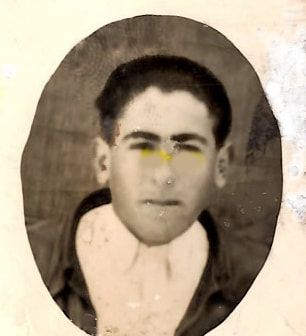 Pedro Apolinar Jr., about 16 years-old
Pedro Apolinar Jr., about 16 years-old “Don’t kill me,” pleaded Pedro Jr.
“I’m not leaving a witness,” the bandit said, and he surely would have fired a shot had not one of his companions stepped in.
“Don’t kill, him. Look at him. He’s just a child.”
In what seemed an eternity, the bandit finally lowered the gun and the group departed, leaving Pedro Jr. stranded without food or transportation. Fortunately for my young uncle, the dog was cowering nearby and unseen by the bandits. Pedro Jr. carried a little notebook all the time to keep inventory and take notes for my grandfather. He tied a note for help on the dog’s collar and sent the dog back to my grandparents. My mother remembered when the dog staggered into the house, and my grandparents’ alarm upon seeing the loyal dog there alone. The police were alerted. By the time my grandfather retrieved my uncle and returned to town, the police had apprehended the bandits.
“Are these the men who robbed you?”
My uncle identified them one by one and added, “That one put the gun to my head, and this one is the one who stopped him from killing me.”
Standing under the full moon of the Nevada desert, I wonder if he sees me invading his dreams at that moment. But even in his dreams, I discover that his mind remains impenetrable. He has become like the desert that absorbed him.
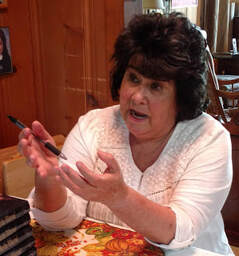
Rosa Martha Villarreal, a retired Adjunct Professor at Consumnes River College in Sacramento, California, is author of several novels important to American literature, including Doctor Magdalena, The Stillness of Love and Exile, and Chronicles of Air and Dreams, and a children's book, The Adventures of Wyglaf the Wyrm. Copyright Rosa Martha Villarreal, 2017.
Lyndon Baines Johnson, then president, had ordered federal agencies to beat the sage bushes throughout the Southwest to recruit Chicanos and Chicanas to join the ranks of federal workers. I got a job at the U.S. Commission on Civil Rights as a press officer. Tocayo got a job running the HEW Office of Spanish Speaking American Affairs. Happily, our paths crossed many times during his several stints in the capital. He will always be a dear friend.
His obituary, which appeared in the Associate Press News, follows:
Armando M. Rodriguez, a Mexican immigrant and World War II veteran who served in the administrations of four U.S. presidents while pressing for civil rights and education reforms, has died.
Christy Rodriguez, his daughter, said Wednesday her father died Sunday at their San Diego home from complications of a stroke. He was 97. He had been ailing from a variety of illnesses in recent years, she said.
Born in Gomez Palacio, Mexico, Rodriguez came to San Diego with his family as a 6-year-old in 1927. But he was forced to return to Mexico after his father was deported during the mass deportations of the 1930s during the Great Depression. A young Rodriguez lived in Mexico for a year before the family could return.
“He barely spoke Spanish,” Christy Rodriguez said.
After the Japanese bombed Pearl Harbor in 1941, some of his Mexican immigrant friends fled to Mexico to avoid military service. Rodriguez, however, joined the U.S. Army. “It was not a difficult choice,” Rodriguez told the Voces Oral History Project at the University of Texas in August 2000.
Following the war, Rodriguez graduated from San Diego State University and worked as a teacher and joined the Mexican American civil rights movement after witnessing his fellow Latino veterans being denied house and facing discrimination.
He led Southern California’s Viva Kennedy campaign, the effort to increase Latino voter support for John F. Kennedy’s presidential run in 1960. Rodriguez founded a chapter of the veterans’ American GI Forum civil rights group in San Diego as a junior high school teacher.
President Lyndon Johnson appointed him chief of the U.S. Department of Health, Education and Welfare’s Office of Spanish Speaking American Affairs. President Richard Nixon later named him assistant commissioner of education in the Office of Regional Office Coordination.
Rodriguez returned to California to become the first Latino president of East L.A. College. In 1978, President Jimmy Carter appointed him to serve on the Equal Employment Opportunity Commission. Rodriguez continued to serve on the commission under President Ronald Reagan until stepping down in 1983.
Later in life, Rodriguez continued to advocate for educational opportunities for Latinos. But Rodriguez told the Voces Oral History Project that he had always wished he had been able to do more.
“The legacy you leave is what you were worth while you were here,” Rodriguez said.
Russell Contreras is a member of The Associated Press’ race and ethnicity team.
INTRODUCTION
GUN LOVE
In the summer of 1970, while I was living and organizing in New Orleans with a women’s study-action group, we discovered that our group had been infiltrated. One of the volunteers who had come to work with our project six months earlier was secretly making detailed reports of our meetings, but with distortions and outright lies, using terms like “extreme,” “fanatic,” “potentially violent.” We were aware that she was a Social Work graduate student at Brandeis University, but had no idea we were the topic of her dissertation or that she was associated with the government-funded Lamberg Center for the Study of Violence. She had also lied to us about her background, claiming that she came from a single-parent family with a working mother in Mobile, Alabama. We had not checked out her history, but it only took one phone call to learn that she came from a wealthy, social register Mobile family. When confronted, she appeared earnestly sorry and tried to convince us that she had been required to report on us in order to continue receiving her stipend, without which she supposedly could not continue her studies at the university.
After her departure, we became caught up in a current of repression and paranoia. One or two or three pale blue New Orleans police cars parked across the street from our building every day. The cops took pictures, and a suspicious, unmarked car with Illinois plates followed us. Older local activists told us the cars’ occupants were “red squad” detectives from the Chicago Police Department. We installed a heavy lock on the flimsy wooden door to our run-down building, but we did not feel safe.
After a week of heavy police surveillance, we began receiving telephone calls from a man claiming to be a member of the Ku Klux Klan. The man threatened to burn down our building, and, of course, we didn’t trust the police, so we did not report it. Instead, we decided to arm ourselves. We saw it as a practical step, not a political act, something we needed for self-defense in order to continue working, not at all embracing armed struggle, which our group opposed as a strategy for making change in the United States. We knew that law enforcement authorities would think twice about attacking us if they knew we were armed. In reality, we were joining a trend occurring in movement groups across the country at that time, and once armed, our mindsets changed to match the new reality.
Two of us drove across the Lake Ponchartrain Causeway to a gun show that was held weekly in a large tin shed on the Slidell fairgrounds. The pickups and vans of traveling gun dealers, with license plates from a dozen states, were parked around the site; I had a cousin in Oklahoma who made his living selling guns that way. Inside the shed, the scene was festive, like any ordinary weekend craft fair or flea market. There were children running and playing, older women sitting on folding chairs visiting with each other, younger women clutching infants and staying close to their men, vendors hawking wares and bargaining, Confederate battle flags waving. Everyone was white. We had no trouble finding the used 9mm automatics we sought. We chose three used Brownings for $100 each, clips included, and a case of military surplus ammunition.
“We’re looking for a shotgun, too,” I said to the dealer. “For protection or duck huntin’?” the vendor asked. “Protection.”
He offered us a Mossberg 500 12-gauge police special riot gun, with a short barrel.
“Isn’t it illegal to have this weapon?” I asked. “Ain’t a sawed-off, legal as taxes.”
We bought it, along with some buckshot shells, all for cash. No paperwork required. The man who sold us the guns also had for sale a number of swastikas in various forms—pins, arm patches, photographs.
We went to the Tulane Law Library to research Louisiana gun laws and found that there were no gun laws in Louisiana. The only restriction was against building an arsenal—defined as more than twenty automatic or semiautomatic weapons—for illegal purposes. Carrying concealed and loaded weapons within the state with no registration was entirely legal. Federal laws prohibited transporting firearms across state lines for sale or to commit a crime, possession of stolen weapons, removal of serial numbers, and various foreign weapons, such as the AK-47.
We kept the loaded shotgun at the door, and we joined an indoor shooting gallery at Lafayette Square. We practiced with the Brownings every day. Shotguns weren’t allowed at the shooting club, but a shotgun took no skill to fire, only nerve and a steady shoulder. Soon after, we acquired rifles and joined a rifle club in the West Bank area. We loaded the bed of our station wagon with four M-1s, a Winchester .22, a .30-30 with a scope, and the riot shotgun, all purchased at the gun shows in Slidell. We paid for membership in the National Rifle Association and affixed their red and black emblem to the back window of the car. Cops were known to not stop vehicles with the stickers, although that probably didn’t work for African Americans.
We acquired more small arms and went daily to the Lafayette Square pistol shooting gallery to practice. In addition to the Brownings, we now owned a snub-nosed Smith & Wesson .357, an S&W long-barrel .38, a Walther PPK 9mm, a Colt .45, and a Beretta .32 automatic. We’d purchased all the weapons legally and anonymously at gun shows. We soon had a closet full of guns, plus our new shotgun reloading equipment and a 100-pound bag of gunpowder.
We spent hours every day breaking down, cleaning, oiling, and polishing our weapons. We took turns loading shotgun shells. We had fallen under the spell of guns. Our relationship to them had become a kind of passion that was inappropriate to our political objectives, and it ended up distorting and determining them.
Knowing that the FBI intercepted our mail, and wanting to inform authorities that we were fully armed, I wrote to my father about my new hobbies—guns and gunsmithing.
Ironically, it seemed the first thing I’d done in my life that he really understood and supported.
“When you can shoot a squirrel in the eye with a .22 at forty yards on the first shot, you’ll be a shooter,” he wrote.
He must have been pleasantly surprised, because he knew that as a child I was terrified of his Remington .22 rifle and shotgun; I got it from my mother, who hated guns. I never asked her why, but she put the fear and hate in my sister and me. Notwithstanding her objections, my two older brothers followed our father. At adolescence, each one started hunting and brought home game, which was our major meat item. We were poor, and ammunition was expensive, so they all had to be good shots, practicing on bottles and cans with BB guns for years before they handled real firearms. It was all for hunting, practical, but there was that other element I could detect but not explain, until I fell in love with guns.
Gun-love can be akin to non-chemical addictions like gambling or hoarding, either of which can have devastating effects, mainly economic, but murder, suicide, accidental death, and mass shootings result only from guns. Guns are made for killing, and while nearly anything, including human hands, may be used to kill, only the gun is created for the specific purpose of killing a living creature. The sheer numbers of guns in circulation, and the loosening of regulations on handguns especially, facilitate deadly spur of-the-moment reflex acts. The Trace, a nonprofit news organization focused on gun violence found that cases of road rage involving a firearm have more than doubled in two years, from 247 in 2014 to 620 in 2016. Research from Gunwatch suggests that “more guns in more cars may simply equate to more road rage incidents in which a gun was brandished, or fired.”1*
At the time of my gun-love, which lasted about two years in the early 1970s, approximately half of all homes in the United States contained a weapon—112 million in total—but nearly a half century later, only a third of households contained firearms, which sounds like progress.2 Yet the number of guns privately owned in the United States had reached more than 300 million, a number equal to the total population. The reality is that in the early twenty-first century, each gun owner possessed an average of eight guns.
It seems that our group, and others, during the years that the Vietnam War was playing out live on our televisions, were in the vanguard of a trend of owning multiple weapons. Army and Navy surplus clothing accompanied the trend, which was soon replaced by sweatshop-produced camouflage garb to meet consumer demand. Something else was also at work, which will be probed in the following chapters.
In 1970, at the time of my own gun phase, the then-celebrated U.S. historian Richard Hofstadter coined the term gun culture. “Many otherwise intelligent Americans cling with pathetic stubbornness to the notion that the people’s right to bear arms is the greatest protection of their individual rights and a firm safeguard of democracy—without being in the slightest perturbed by the fact that no other democracy in the world observes any such ‘right’ and that in some democracies in which citizens’ rights are rather better protected than in ours, such as England and the Scandinavian countries, our arms control policies would be considered laughable.”3
Hofstadter narrates the historical roots that might explain the violence wrought by civilian gun use, but argues that other European countries were surely as violent. In one brief paragraph, he dismisses the Second Amendment as having any validity in constitutional law: “By its inclusion in the Bill of Rights, the right to bear arms thus gained permanent sanction in the nation, but it came to be regarded as an item on the basic list of guarantees of individual liberties. Plainly it was not meant as such. The right to bear arms was a collective, not an individual, right, closely linked to the civic need for ‘a well regulated Militia.’ It was, in effect, a promise that Congress would not be able to bar the states from doing whatever was necessary to maintain well-regulated militias.”4
Did Hofstadter believe that these astute “founding fathers” mistakenly threw in the Second Amendment to a Bill of Rights that was about individual rights? Hofstadter does note, without discussion, that the first draft of the Virginia Constitution of 1776—Thomas Jefferson’s work, which preceded the writing of the U.S. Constitution by nine years—included the individual right to bear arms, stating: “No freeman shall ever be debarred the use of arms.” Did Jefferson make a mistake in Virginia, and then contribute to another mistake, making the right to bear arms an individual right in the U.S. Constitution? Hofstadter attributes these “flaws” in Jefferson and the other founders to “reverting to one of the genial fictions . . . the ancient Saxon militia.”
Killing, looting, burning, raping, and terrorizing Indians were traditions in each of the colonies long before the Constitutional Convention. “Militias,” as in government-controlled units, were institutionalized by Article I, Section 8, Clause 15 of the U.S. Constitution, and were used to officially invade and occupy Native land. But the Second Amendment (like the other ten amendments) enshrined an individual right. The Second Amendment’s language specifically gave individuals and families the right to form volunteer militias to attack Indians and take their land. Asserting this scattershot guess about the origin of the Second Amendment, Hofstadter offers no tie-in between this genealogy and the astronomical number of guns possessed in this country. So he settles on the National Rifle Association: “American legislators have been inordinately responsive to the tremendous lobby maintained by the National Rifle Association, in tandem with gunmakers and importers, military sympathizers, and far-right organizations. A nation that could not devise a system of gun control after its experiences of the 1960s [referring to the assassinations of President John Kennedy, Martin Luther King Jr., and Robert Kennedy], and at a moment of profound popular revulsion against guns, is not likely to get such a system in the calculable future. One must wonder how grave a domestic gun catastrophe would have to be in order to persuade us. How far must things go?”
Hofstadter’s argument is important, not just because he was an influential liberal historian of the United States who penned the classic 1964 essay “The Paranoid Style in American Politics,” but because his arguments about guns in 1970 have been used and repeated, like a mantra, ever since. Then, as now, gun-rights advocates and gun-control advocates have little basis for communicating. The great divide reflects, rather remarkably, the persistence of pro-gun narratives that have morphed as times changed over two centuries, from westward expansion, industrialization, and urbanization, to the advent of movies, television, and the Internet. Gun ownership appears irrational if not insane to gun-control advocates, while gun lovers rely on the Second Amendment, because they have no other argument and don’t wish to admit, perhaps even to themselves, what the Second Amendment signifies. Neither party seems to have any idea what the Second Amendment was originally about, although many who “cling to their guns”5 intuit why.
This blind spot, as well as the racism and erasure of history, can be seen in the following example. After retiring, the late Warren E. Burger, who served as the fifteenth chief justice of the United States from 1969 to 1986, wrote a long and impassioned plea for gun control, arguing that the Second Amendment was dated and no longer valid. Significantly, he published his commentary in Parade magazine, not a law journal. “Let’s look at the history,” Burger wrote. “First, many of the 3.5 million people living in the 13 original Colonies depended on wild game for food, and a good many of them required firearms for their defense from marauding Indians.”6
There is no doubt that the United States is exceptional among wealthy nations—and even many poorer nations—in legal permissiveness about gun ownership, as well as in gun deaths per capita. By 2016, nearly all the states allowed open carry for firearms with various limitations regarding licensing, loaded or unloaded, weapons training or not, gun types, and so on. The holdouts not allowing open carry were California, Illinois, Florida, and the District of Columbia. Massachusetts, Minnesota, and New Jersey allow open carry for handguns but prohibit open carry of long guns, while New York and South Carolina allow open carry for long guns but prohibit open carry for handguns.7
Total gun deaths in the United States average around 37,000 a year, with two-thirds of those deaths being suicides, leaving approximately 12,000 homicides, a thousand of those at the hands of the police.8 Mass shootings—ones that leave four or more people wounded or dead—now occur in the United States, on average, at the pace of one or more per day.9 Disturbing as that fact is, mass shootings currently account for only 2 percent of gun killings annually.10 The number of gun deaths—37,000—is roughly equal to death-by-vehicle incidents in the United States per year. To lawfully drive a vehicle, a person must acquire and maintain a driver’s license and drive a car that is registered and insured. A car owner may be fined for driving with a visible safety flaw on the vehicle, such as a taillight out, and a driver may be stopped at any time by authorities and can easily lose the right to drive, among other restrictions. The high rate of traffic fatalities begs the question of how effective gun restrictions would be. Heavy drinking while driving causes nearly three times as many deaths as guns each year in the United States, despite restrictions on the buying, selling, and public use of alcohol. It is necessary to look elsewhere for what causes firearms proliferation and gun deaths; it is necessary to seek out the historical roots.
With the election of Bill Clinton in 1992, the Democratic Party platform for the first time included gun control, while the Republican Party platform opposed gun control, proclaiming: “We note that those who seek to disarm citizens in their homes are the same liberals who tried to disarm our Nation during the Cold War and are today seeking to cut our national defense below safe levels.”11 In the previous three presidential elections, neither the Republican Party nor Democratic Party platforms had mentioned guns at all. With the Democrats in control of the White House and Congress in 1993, there was no trouble passing a gun-control bill requiring background checks, commonly called the “Brady Bill” after Jim Brady, who was wounded and permanently disabled during the shooting of President Ronald Reagan in 1981. Brady’s wife, Sarah, had campaigned tirelessly for background checks, which did result in a bill that was introduced in Congress in 1987, but the measure lingered without action until it was signed into law in 1993. The following year, Congress passed a ban on assault weapons but in 2004, when the statute was up for renewal, it was allowed to lapse, as it had proved largely ineffectual and unenforceable. Georgetown University law professor David Cole writes: “It is remarkably difficult to define an ‘assault weapon.’ They are semiautomatic, which means they fire a new bullet with each trigger pull, while automatically reloading. But most guns made today are semiautomatic, so the ban on assault weapons focused on the cosmetic military appearance of certain guns, and was easily evaded by alterations in design. Moreover, while gun-rights proponents are hard-pressed to offer a legitimate reason for civilians to own assault weapons, they are used in a very small proportion of gun crimes. Most crimes involve ordinary handguns.”12
Professor Cole finds a common thread of arguments condemning the National Rifle Association and does not question the organization’s powerful role, which relies on a strong electoral base throughout the country, but issues this caution:
Gun control advocates will not make progress until they recognize that the NRA’s power lies in the appeal of its ideas, its political engagement and acumen, and the intense commitments of its members. Until gun control advocates can match these features, they are unlikely to make much progress. That the gun industry may have helped construct modern gun culture does not negate the very real power that culture holds today.13
Indeed, the N.R.A. has around 5 million dues-paying members, and many millions more who support N.R.A. calls for legislative action. The N.R.A. annual budget is $300 million, only 10 percent of which goes to direct lobbying. The N.R.A. does little lobbying, but rather follows and grades every political candidate on gun rights and calls for supporting or campaigning against the candidate accordingly; it focuses on state legislators, who make most gun laws; gun-rights activists tend to focus on Congress. The N.R.A. has active affiliates in many communities in every state, with an average membership of 100,000 per state.
While Cole recommends that we look for the reasons why guns have such strong appeal in the United States in comparison with other societies, he does not explore those reasons. That is the purpose of this book. However, instead of dismissing the Second Amendment as antiquated and irrelevant, or as not actually meaning what it says, I argue that understanding the purpose of the Second Amendment is key to understanding the gun culture of the United States, and possibly the key to a new consciousness about the lingering effects of settler-colonialism and white nationalism.
The Second Amendment of the United States Constitution is a simple statement: A well regulated militia being necessary to the security of a free State, the right of the People to keep and bear arms shall not be infringed. The National Rifle Association and its constituency argue that the Second Amendment guarantees the right for every individual to bear arms, while gun-control advocates maintain, as did Hofstadter, that the Second Amendment is about states continuing to have their own militias—emphasizing the language of “well regulated”—and that this is manifest in the existing National Guard.14
However, the respective state militias were already authorized by the U.S. Constitution when the amendment was added. The Constitution recognized the existing colonial, now state, militias that formed before and during the War for Independence, and mandated to them vital roles to play: “to execute the Laws of the Union, suppress Insurrections and repel Invasion” (Article I, Section 8, Clause 15). The President of the United States is the commander-in-chief of the state militias “when called into the actual Service of the United States” (Article II, Section 2).15
Given that what are now the states’ National Guards are descended from state militias, which themselves were repurposed from colonial militias, why was the Second Amendment added as one of the enumerated rights of man in the Bill of Rights? Unequivocally, the Second Amendment, along with the other nine amendments, constituted individual rights, and the militias referenced are voluntary, not state militias.
One argument that runs through historical accounts of the thinking behind the Second Amendment is the one Hofstadter settled on, that Thomas Jefferson romanticized old English-Saxon rural militias, idealizing his “yeoman” farmers as fiercely independent and rightly fearing Big Brother government, insisting on settlers’ right to overthrow oppressive regimes. But, what colonists considered oppressive was any restriction that British authorities put on them in regard to obtaining land. In the instances of Bacon’s Rebellion in 1676,16 the War of Independence itself, and many cases in between, the settlers’ complaint was the refusal of the British colonial authorities to allow them to seize Native land peripheral to the colonies, which could lead to unnecessary and expensive war. Historian Charles Sellers wrote: “Cheap land, held absolutely under the seaboard market’s capitalist conception of property, swelled patriarchal honor to heroic dimensions in rural America. The father’s authority rested on his legal title to the family land. Where European peasant landholdings were usually encumbered with obligations to some elite, the American farmer held in fee simple. Supreme in his domain, he was beyond interference by any earthly power.
Except for a modest tax and an occasional half-day of neighborhood roadwork or carousing militia drill, he owed no obligations of labor, money, service, or (finally) religious fealty to any person or entity. Fee-simple land, the augmenting theater of the patriarchal persona, sustained his honor and untrammeled will. This extraordinary independence inflated American farmers’ conception of their class far above peasantry.”17
……………..
As a whole, this book attempts to confront fundamental aspects of U.S. history that continue to be too often overlooked or denied, and which can be traced back to the original meaning and intention of the Second Amendment. It aims to confront the violence implicit in U.S. society from the moment of its conception, and the various narratives and forces that have taken shape to deny the consequences of that violence by popularizing and commercializing it. The book also aims to acknowledge the families, traditions, memories, and resistance of Indigenous People and African Americans whose lands and lives the Second Amendment was forged to take.
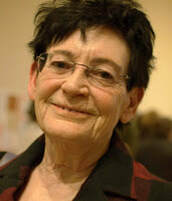
* All footnotes cited here can be found in the printed book.
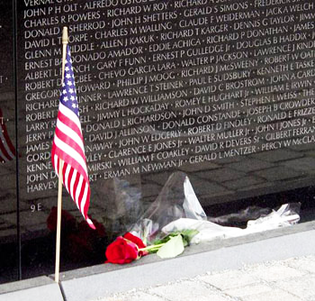
Remembering
Remembering
Remembering
Reflections on the Wall
By Rafael Jesús González
For sometime now, I have shared my thoughts during my visit to the Vietnam Memorial in 2006 as my way of honoring Memorial Day:
My first day in Washington D.C., in the heat of August, straight from the Museum of the American Indian, wearing my T-shirt picturing the Apache Gerónimo and his armed companions and reading, "Homeland Security, Fighting Terrorism since 1492," I walk down the Mall, skirt the obelisk of the Washington Monument, down the reflecting pool, past the white marble Greek temple of the Lincoln Monument, to the Viet-Nam Wall - a pilgrimage to the memorial to "my war," mine not because I fought in it, but because I fought against it - heart, mind, and soul.
My intent, a kind of penance, like saying the rosary, is to start at one end to the other and read each and every one of the 58,245 names, imagining a face, an age, a history, a life. I know it will be hard, but do not think it impossible (not one of the five million names of the Vietnamese dead are even alluded to.) I start with one name, John H. Anderson Jr. (PFC, 19 years of age, dead May 25, 1968, I later look up in the log), then several, increasing exponentially. It becomes more and more difficult to focus, the faces, the figures of families, lovers, tourists reflected moving against the mirroring black granite Wall is a distraction, their chatter, at times their laughter, an intrusion upon my meditations. As the Wall grows longer, rises higher and higher toward the center, the names crowd upon each other, pile up high and tight, at times difficult to distinguish, I do not know if for the numbers, the height, for the glare of the sun, or for the tears welling in my eyes. The names, the letters blur, run together.
I begin to skim, to let my attention chance upon a name, a Smith, a Cohen, a Bankowski, an O'Mally, a Chan, certainly a González here and there - every European and many another culture represented by a name. How came they to be there, what history of need, what myth or dream of theirs, or of some recent or distant ancestor, brought them to be "American" and die in a war without sense or reason?
After a time my reading becomes cursory, I occasionally stop, kneel to pick up and read a letter, a note of testimonial - of love, of remembrance - left at the foot of the Wall by some surviving wife, sweetheart, mother, father, son, daughter, brother, sister, nephew, niece, friend. A flag here and there, a flower (mostly artificial, a few in soda bottles, wilting in the heat.)
My mind gradually becomes numb, at times almost hallucinatory, wonders -imagines seeing the name there of a moneyed coward with powerful political connections that now inhabits a white house not far away.
* * *
They say the dead live on for as long as they are remembered. How many of these names etched here are still remembered? A few people, holding scraps of paper against the black stone make rubbings. Most hurry by, the kids impatient to reach the end, the names picked there not interesting enough to hold their attention. The names.
Last year, Xochipilli, my men's ritual group, in collaboration with the 'Faces of the War Project,' created an Ofrenda to the Victims of War for the Días de los Muertos Community Celebration at the Oakland Museum of California. The ofrenda stood against the walls lined with the photographs and names of the U. S. soldiers dead in Iraq, the names, without the photographs, of Iraqi dead. The names, still fresh, living in recent memory. Another war, as senseless, as irredeemable as that of Viet-Nam. I am tired, my face wet with sweat and tears I do not bother to wipe away. Tourists look at me, respectfully keep their distance, look away. They sense that this, that of Viet-Nam, is my war; I do not know if my shirt gives them a clue as to why.
* * *
I reach the other end of the Wall, Jessie Charles Alba (Sgt., aged 20, dead May 25, 1968, the middle of the war.)
* * *
Retracing my way up the reflecting pool, I must climb the steps of the Lincoln Memorial from which Marian Anderson once sang, from which Martin Luther King, Jr. spoke of his dream. I stand before the colossal figure of Lincoln enthroned and read his words chiseled into the white marble to his right: " . . . a government of the people, for the people, by the people . . ." A pious hope devoutly to be wished.
Reflexiones sobre el Muro
Por Rafael Jesús González
El primer día en Washington D.C., en el calor de agosto, justo del Museo del Indio Americano, llevo mi camiseta con la imagen del apache Gerónimo y sus compañeros armados que lee, "Homeland Security, Luchando contra el Terrorismo desde 1492." Camino por la alameda, el Mall, rodeo el obelisco del monumento a Washington, sigo la alberca, paso el templo griego de mármol blanco del monumento a Lincoln, al Muro de Vietnam - peregrinaje al monumento a "mi guerra," mía no porque luché en ella, sino porque luché en oposición de ella - corazón, mente y alma.
Mi intención, un tipo de penitencia, como decir el rosario, es empezar de una punta a la otra y leer cada uno y todos los 58, 245 nombres, imaginándome un rostro, una edad, una historia, una vida. Sé que será difícil, pero no lo creo imposible (ni siquiera se alude ni a uno de los cinco millones de nombres de los vietnamitas muertos.) Empiezo con un nombre, John H. Anderson Jr. (PFC, 19 años de edad, muerto el 25 de mayo 1968, más tarde busco en la lista), luego varios, aumentando exponentemente. Se me hace más y más difícil enfocarme, las caras, las figuras de familias, amantes, turistas reflejados moviéndose contra el espejo del Muro de granito negro es una distracción, su parloteo, a veces su risa, una intrusión en mis meditaciones. A grado que el Muro se hace más largo, se eleva más y más alto hacia el centro, los nombres se amontonan uno sobre el otro, se amontonan alto y apretado, a veces difíciles de distinguir, no sé si por la cantidad, la altura, el relumbre del sol o las lágrimas que me llenan los ojos. Los nombres, las letras se borran, se corren una contra la otra.
Empiezo a pasar los nombres por en cima, dejar mi atención caer sobre un nombre u otro, un Smith, un Cohen, un Bankowski, un O'Mally, un Chan, indudablemente un González aquí y allá - toda cultura Europea y muchas otras representadas por un nombre. ¿Cómo llegaron a estar allí, que historia de necesidad, que mito o sueño suyo, o de algún antepasado reciente o lejano, los trajeron a ser "americano" y morir en una guerra sin sentido o razón?
Después de algún tiempo mi lectura se hace superficial, paro de vez en cuando, me arrodillo a levantar y leer una carta, una nota de testimonio - de amor, de recuerdo - depositada al pie del Muro por algún sobreviviente, esposa, novia, madre, padre, hij@, herman@, sobrin@, amig@. Una bandera aquí y allá, una flor (la mayoría artificiales, unas cuantas en botellas de refresco, marchitándose en el bochorno.
La mente se me entume gradualmente, a veces casi halucinante, se desvía - imagina ver allí el nombre de un cobarde adinerado con conexiones políticas poderosas que ahora habita una casa blanca no lejos de aquí.
* * *
Dicen que los muertos viven mientras sean recordados. ¿Cuántos de los nombres aquí grabados son aun recordados? Algunas personas, poniendo trozos de papel contra la piedra negra hacen borradores. La mayoría se apresuran, los muchachos impacientes a llegar al final, los nombres cincelados allí no lo suficiente interesantes para captarles la atención. Los nombres.
El año pasado, Xochipilli, mi grupo de hombres dedicado a la ceremonia, en colaboración con el 'Proyecto Rostros de la Guerra', montó una ofrenda a las víctimas de la guerra para la Celebración Comunitaria del Día de Muertos en el Museo de California en Oakland. La ofrenda se montó contra las paredes cubiertas de las fotografías y nombres de los soldados estadounidenses muertos en Irak, los nombres, sin fotografías, de muertos Iraki. Los nombres, aun frescos, vivientes en la memoria reciente. Otra guerra, tan insensata, tan irredimible como la de Vietnam. Estoy cansado, la cara húmeda de sudor y llanto que no me preocupo de limpiar. Me miran los turistas, respetuosamente guardan la distancia, alejan la mirada. Sienten que esta, la de Vietnam, es mi guerra; no sé si mi camiseta les sugiera por que.
* * *
Llego al otro extremo del Muro, Jessie Charles Alba (Sgt., 20 años de edad, muerto el 25 de mayo 1968, a mediados de la guerra.)
* * *
Retrazando mis pasos a lo largo de la alberca, me siento obligado a subir los escalones del monumento a Lincoln desde los cuales Marian Anderson una vez cantó, desde los cuales Martin Luther King, Jr. habló de su sueño. Paro ante la figura colosal de Lincoln entronizado y leo sus palabras cinceladas en el mármol blanco a su derecha: ". . . un gobierno del pueblo, para el pueblo, del pueblo . . ." Esperanza pía devotamente anhelada.
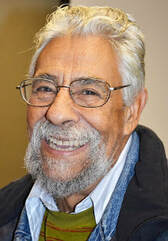
The photo, taken in 1916, shows a “Special” priced at $59; the window reflects a shoe store across the street, a hitching post and a mule hauling a wagon.
This I know to be true
From a lecture the author will present for the Saber es Poder—IME Award in Mexican American Studies ceremony at the University of Arizona at 6 pm on April 27, 2018, at the Consulate of Mexico in Tucson.
Or sometimes, we simply rode around the University of Arizona with its palmeras and grass being sprinkled and took advantage of the breeze created by the “Forito” with the moisture of the sprinklers—a kind of ambulatory air conditioning at a time when only swamp coolers were the sources of relief if you had one.
Since the seat of our Forito only had room for my parents and sister, I had to lay down on top of the seat back parallel to the back window and peer out at the huge brick buildings, tile roofs, and in the middle Old Main, setting itself apart from all the rest. I wondered why all this magnificence was there and I asked my Dad on one of those rides: Pa, Que hay alli? He paused as he turned the wheels around one of the many curves on the then small campus and said: “Allí está toda la sabidura del mundo.” There lies all of the world’s knowledge. I responded: “Allí voy a trabajar un día.” I’m going to work there one day.
And I did and how I knew I don’t know but what I did know was that my parents and sister always confirmed on a daily basis that this is where there was “all of the world’s knowledge” and that it was for me to become part of it as a student and later after Mom and my sister had passed away, as an anthropologist.
This I know to be true.
But from this very early introduction to a world of knowledge, I also came to understand that what we knew to be true just was not known or part of this world at this university and not in many others in any substantive way.
What I knew to be true was that the only reference to me as a person in elementary school was in a little primer entitled, “Carlos the Centipede,” and all the rest were about Dick and Jane who didn’t speak the language of my father and mother, and tías and tíos, and primas and primos, and of anything Mexican that I knew to be true. What I knew to be true was that I was born by accident in the old Saint Joseph’s Hospital in Nogales because we were returning to Tucson from visiting relatives in Magdalena and my mother pregnant with me went into labor pains right before the border line.
After I was born, she said that my bassinet was placed next to the window parallel to the cyclone fence that separated Sonora from Arizona and that my feet were south while my head was north.
So for the next many years, this travel was repeated many times during the year and my cousins and tías and tíos would reciprocate in kind and some of my cousins went to Salpointe and at times others attended the University of Arizona. This was a transborder life of extension beyond the border and we knew this to be true.
We spoke Spanish when they visited and we spoke Spanish when we visited and my sister and I spoke Spanish to my parents and it was, however, sometimes a struggle. Because in fact many of us were in schools in which our language, much older than the University of Arizona or Arizona, was being submerged by an insistence on English sometimes brutally rendered.
At times, we were pulled out of the waiting lines going into the elementary school room and if we spoke the forbidden language were given swats for each word spoken. There was no crying but that was left inside for many years and not forgotten. But this was balanced by caring Anglo teachers who made us hide behind them when the swatting principle passed by. I am sure that this was the only reason many of us did not become racists. For they, like some, had an uncommon commitment to protect the innocent. This we knew to be true.
Nevertheless, we spoke and read it at home anyway and listened to my mother and father’s stories of their struggles and their achievements and of their unlimited capacities to overcome that which they should not be able to do and achieve that which they should not be able to do as well.
So that my mother who spoke English in wonderful fractured phrases but spoke elegantly in Spanish, sang beautifully, and played the castanets at parties, read the Maryknoll Fathers’ lefty publications, and had a “fayuca” selling clothes and shoes to Braceros and Tohono O'odham agricultural workers in Marana, would talk about the Mexican Revolution and how her father—a Colonel of Cavalry had been killed at the battle of Parral with a dum-dum bullet as he was boarding a train after being defeated by Villa’s troops. Yet, her mother, almost simultaneously in the courtyard of her home, plugged the wounds of young revolutionaries with pillowcases and bed sheets and held their heads while they lay dying and asking for their own mothers.
From this compassion grew my Mom’s unwavering moral center to defend the innocent and grew livid many years later in the late 1960’s when on television she saw police beating protestors during the Chicago convention and stated her displeasure in no uncertain terms in Spanish and fractured English. But I didn’t know then and until much later that this staunch Catholic centered moral woman was also a Sephardic Jew who revealed it to me after my sister had died and perhaps that was also part of her moral equation as well.
I knew this to be true.
So did my bilingual father speak quietly of how he had been sent by his father to Tucson from Magdalena to his relatives on his mother’s side who had been in Tucson and Tubac since the Presidio. The Gastelum, Garcia, and Gil networks of viejos Mexicanos Indo Espańoles had gone back and forth between Tucson and Tubac and Magdalena and Altar long before there was an Arizona but referred to then only two grandmothers ago as la Pimeria Alta y Pimeria Baja or simply as Sonora.
Simultaneously, he sold clothes at the age of 16 at La Bonanza which later became Jacome’s and also delivered telegrams for Western Union, and as well he used a piano tuning fork to tune Barney Oldfield’s wheel spokes on his racing car which ran races on Speedway, which is now a major thoroughfare.
But he also spoke in measured tones of the terrible things that Sonora did to the Yoemi people and said as a child he witnessed the hanging of these people for miles between Magdalena and Imuris and many of those who escaped created Pascua Village off of Grant Road and Guadalupe south of Phoenix by crossing that bifurcation we call the border.
And on that border he spoke of how his eldest brother Lauro had caught up with a deposed Revolutionary Coronel who had murdered his compadre. The Colonel had killed him when he ordered him to stand down as the Alcalde and he had refused.
Later the Colonel had lost favor in the new Revolutionary government and fled to the hills of the Bacatete Mountains but the Yoemi who lived there sent word to my Tío Lauro that he would be crossing at Nogales. So he waited for the Colonel at the Yellow line separating the two Nogaleses and noticed an ice truck that delivered ice from Nogales, Sonora to Nogales, Arizona was not dripping water from its canvas-covered load. He stopped it and took out the hiding deposed Colonel who begged for his life on his knees. But Lauro being the man he was, placed his 45 Colt Revolver in the man’s mouth and killed him. My Dad said that his feet lay on the Sonora side, while his blood ran north.
So for many years, “Ed,” as he was known by his fellow mechanics because they couldn’t pronounce “Adalberto,” came home to regale us with his stories of having fixed the impossible, taking complex differentials and transmissions of huge trucks and making them hum again simply by listening to the way the gears were turning and falling inside of their covered gaskets.
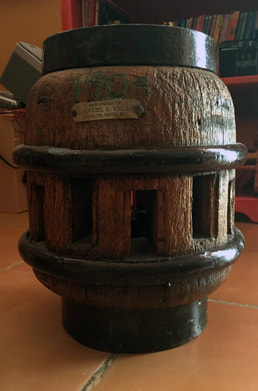 A picture of a mesquite wagon wheel with the author's grandfather' name plate, and a date carved in by his father so as not to forget when it was built.
A picture of a mesquite wagon wheel with the author's grandfather' name plate, and a date carved in by his father so as not to forget when it was built. But we also lived a transborder life in spite of, like I said, frequent visitations and travel across the bifurcation but lived that life in Tucson so that on Fridays my mother, father, and sister and I would now be driven in the Forito to the Plaza Theater and fall off of our chairs at the antics of Cantinflas and Tin Tan, admire the voice of Jorge Negrete, and swoon at the sight of Maria Felix while I munched on buttered popcorn. And on Saturday we would go to the Lyric Theater across the street where we watched second-run American movies and admired Humphrey Bogart and Ingrid Bergman and Bob Hope, also swooning and laughing but in English. My sister Lucy worked as a cashier there after being moved from the Fox Theater so she could speak to the customers in Spanish. And we also watched the Pathway Film news in English about World War II. But we were not there either since all of the faces and names of those appearing had nothing to do with us. But when we visited the Acostas on Sunday next and a telegram arrived that Bobby had died in a prisoner of war hospital after being shot down over Germany, Mrs. Acosta’s screams would indelibly be etched in my mind and soul and they remain there to even this moment. I knew this to be true.
A few years later and me now a teenager, when Gene Suarez came to court my sister Lucy after he had returned from Korea having served as the only Chicano Marine combat photographer for many months, I couldn’t fail to notice that he was barely able to hold a cup of coffee in his hand without clinking the saucer underneath and when I asked stupidly why he shook, he could only grimace a smile. However, we didn’t appear in any movies about Korea nor in any documentary following that war so that later when my cousin Bill now a retired mathematics professor came home, he was ignored or despised as a Vietnam veteran until only very recently. Yet even now, Ken Burns ignored us again in his series of WWII and Vietnam films. We knew that was not true and even so much more.
But what we also learned was to become culturally bilingual, bicultural, and multihistorical and not homogenized even though most institutions insisted us with the opposite. We became in spite of and not because of and we became also quite cognizant of the limits of all of the world’s knowledge which we knew was there but not made present by any medium or narrative. So, we often reflected on what we knew to be true.
Thus, we were taught history through unsolicited conversations so that one day after we had eaten dinner and in the living room watching Gorgeous George—the blond, curly haired wrestler on a black and white Sylvania TV, my mother delicately broached the subject with my father, that Lucy, before she met my brother in law, was going to be visited by a young man. My sister was seven years older than I so I could be a royal pest when young men came over. But on this occasion my very Sonorense Dad asked who the young man was and my mother responded that he was a young Irish neighborhood boy by the name of Brendan Flannery, but said something like (phonetic pronunciation) to which he responded that No, he only wanted Sonorenses. My mother said,” but wait a minute; don’t you remember that they fought for us?” I didn’t know what this meant so I asked, and my mom responded that this was the Irish San Patricio Brigade that fought valiantly for Mexico against the invading American army in Mexico City. My dad paused and responded, “Ah, sí, dile al muchacho que venga.” So from two grandmothers ago this was still fresh in their minds and now mine. This we know to be true.
Yet the non-existing process was reinforced again and again in almost every imaginable way possible from schools, to films, to novels, to short stories, to newspapers, to non-histories, or even worse represented as a people without histories, but just a population to be bought and sold like those we observed during the awful Operation Wetback of the 1950s. My parents made sure that we were well dressed before we went to mass a la Iglesia de Santa Cruz on 22nd Street so we wouldn’t be confused with the “mojados” who were rounded up as they left Holy Communion. My dad remembered in the thirties that there had been previous expulsions of hundreds of mexicanos many of them American citizens and were lined up like cattle for the train trip to Nogales. But, ironically many of those same mexicanos returned to fight in World War II like my kids’ Uncle Tony who was wounded at Anzio serving as an Army paratrooper and chased about by a German Tiger tank until it caught up with him, but none appeared like him except ever so slightly much later in the Band of Brothers series. This we knew to be true.
But, it all came to a head during and after Vietnam because we just said “Ya Basta” and in many different ways we invented an entire course of study that we knew to be true and that was Mexican American Studies. And we experimented during that period and created, and argued, and debated what we thought we knew to be true. Some of us went off on fancy theoretical roads that often obfuscated rather than clarified which we knew to be true. Sometimes we created elaborate explanations filled with polysyllabic words of alleged wisdom and understanding but sometimes we confused ourselves. Yet for the most part, I think we got it right so that an entire literature exploded of creative works in the humanities, social sciences and stimulated our presence in the sciences. So that across the board exploded the works from novels to short stories, from Miguel Mendez to Sandra Cisneros and in grand works of anthropology like those of Roberto R. Alvarez and Diego Vigil and certainly almost parallel to this was Tom Sheridan’s great work and in history as well as such as Dave Weber’s masterful works, and Juan Gomez Quinońes, and of course my old friend Oscar Martinez, and the old Sonorense descendent—cantankerous but historically wonderful—Rudy Acuña. But not to be outdone and to balance if not overtake the male narratives emerged the crucial and the pioneering work of the Chicana history risk-taker Antonia Hernandez and the feminist genius of Vicki Ruiz, and the great border Poet and Essayist, Gloria Anzaldua, and certainly not the least la chiquita pero muy grande—the anthropologist Patricia Zavella documenting the historical and anthropological space and place of Mexican cannery women—things began to come together as more proximate to that which we knew to be true.
And scientific warriors like my Cousin Bill and many others in the sciences made sure that our kids became mathematicians, biologists, material scientists, and created new funds of knowledge and what many do not know is that in the sciences alone the Chicano Ford Fellows in the sciences were awarded over a 20 year period almost 185 million dollars in research awards of a sample of Fellows I collected.
This while my cousin Manny taught English at Pima to give our kids hope and knowledge and a way forward past the non-narratives. Gilbert, my other cousin, created “El Mariachi” to solidify lo mexicano once and for all in space and place and without denial or shame of either language, culture, or song. And so many others refused to be unnoticed or erased like my former freshman high school student, Isabel Garcia, who went on to be one of the premier immigration and social justice protectors of innocents and, of course, Sal Baldenegro and Raquel Goldschmidt who continue to fight the good fight to this moment.
And fresh from concretizing the great copper strikes with her incessant support and action, Ana O'Leary Ochoa joined a new cohort of intellectual warriors with Norma Gonzalez as graduate students and they became amazing innovative knowledge makers of our history and language, and most recently both of them crossed borders to tell the tales of the suffering of the innocents of deported parents now in schools in Mexico suffering what generations earlier suffered in English-only schools.
They and We in fact pivoted through our work through Mexican American Studies and impacted greatly on the narratives of universities, colleges, and public schools from a population noted merely as a partial commodity to a historical one, one present from the past, and one present in the present and one present for the future. So we created departments, programs, and even schools all devoted to this population sometimes ethnically focused, sometimes in tandem with other populations, and certainly in many cases with a transborder cast that recognized the commonality of not only culture and language, but of relationships, connectivities, and ties between all of the varying versions of ourselves. And in spite of the state debacle of the Tucson program, the students, teachers, and community knew what was to be true—and won—at least the war but not the battle, not quite yet.
The negating assumption of the anti-Mexican American move failed because it could simply not recognize the following. We range culturally and genetically from Texcoco of Mesoamerica to the Four Corners of Arizona, Utah, New Mexico, and Colorado, from the Spanish Palace of Madrid to the Alhambra of Granada, and from the Castillo of Chapultepec of Mexico City and the Virgen de Guadalupe on el Cerro de Tepeyac to the adobe walls of the Presidio of Tucson and to the Dove on the Desert—San Xavier del Bac and from our homes with the cyclone fences behind which grow yellow roses to the red and blue banners of Bear Down Gym. We are history makers and doers and accept all as we would accept ourselves since in fact we are the world in so many ways.
We are Mexican American Studies and we are the intellectual and cultural repository and depository of this population south and north of the bifurcated line only two grandmothers old. We narrate about ourselves and others and we respect the mechanics, carpenters, gardeners, mathematicians, physicians, biologists, and housecleaners, taco stand owners, and abuelas y tías, y primos and friends, Anglos, African Americans, Indígenas, Asians, todos—because we are also all of them. We speak Spanish, English, Spanglish, and if we are very lucky, a bit of Yoemi, Navajo and Tohono O'odham. We lose our children in American wars, and sometimes in the street and too many still are not graduating and too many are locked up where they should not be. We have struggled, we have achieved, we have failed and we have succeeded. But we are not ahistorical nor a simple commodity.
We are history and history makers and We know all this to be true and We are Mexican American Studies.
So that if I were five again and lying on top of the backseat of my Dad’s Forito and passing by the University of Arizona and I asked once more: “Pa, que hay allí?” Now, his answer would be slightly changed: “Allí ahora si está toda la sabiduria del mundo.” Now all of the world’s knowledge is there. I know that to be true.
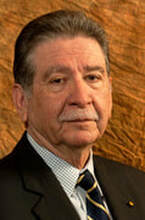
From Diverse Origins We Come,
Not Just Azteca
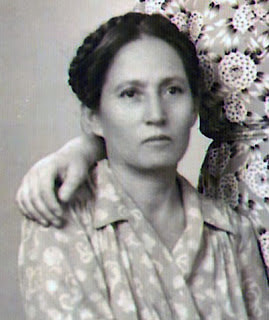 Felicitas Peña Morales, Tlaxcatecan, the author’s paternal grandmother
Felicitas Peña Morales, Tlaxcatecan, the author’s paternal grandmother When Elena Garro wrote her short story, “La culpa es de los Tlaxcaltecans,” she was drawing from the popular Mexican myths about the fall of Mexico-Tenochititlán, in which the innocent Aztecs were destroyed by the evil Spaniards with the help of Cortés’s treacherous Indian allies. Foremost was Malintzín, the Nahua noblewoman who was sold into slavery by her own mother and step-father and who later became Cortes’s lover-translator and mother of one of the first mestizos, Martín Cortés. Second on the list of villains were the Tlaxcaltecans. A popular Mexican saying goes: How could Cortés with 500 men and 15 horses conquer La Gran Tenochtitlán? Blame the Tlaxcaltecans.
However, history is more complicated than myths, especially those predicated on grievance and victimhood. I bring this up because my paternal grandmother, Felicitas Peña, was a Tlaxcatecan. She was actually a mestiza, descendant also from some of the prominent founding Spanish families of Northern Mexico, but she identified with her indigenous ancestors who made up most of her DNA, the Tlaxcaltecans.
Once, when my father was in grade school, he told Felicitas about what he had learned in school about the conquest of Mexico. Mexico in the 1930s was in its heady days of nationalism and a long-overdue embrace of its indigenous origins. When people thought of Jose Vasconcelos’ “La Raza Cósmica,” they imagined themselves as Aztecs.
My grandmother listened intently and waited for my father to finish. Then she told him, “The Aztecs were defeated because they were assassins.” Their victims were my grandmother’s people, the Tlaxcaltecans, whom the Aztecs not only wanted to conquer but whose captured warriors were premiere sacrificial victims for their blood-thirsty national god, Huitzilopochtli.
Although all of the Mesoamerican societies, including the Tlaxcaltecans, practiced human sacrifice, none matched the Aztecs in scale. The level of human sacrifice increased during periods of crisis. There was no bigger crisis than the foretold doom of the world in the year of Ce Acatl Topiltzin, 1519 C.E.
Cortés offered the Tlaxcaltecans the opportunity to rid themselves of their nemesis once and for all, which they did with brutal efficiency.
For the last 25 years or so, Mexican historians have begun to re-examine the history of the conquest through the lens of post-nationalism. As with other contemporary historical revisions, different narratives are taken into perspective. For example, the role of Malintzín. Historians now question the traitor label, instead focusing on her as an individual woman.
What could she have done differently given the circumstances? What would anyone of us do if confronted with her situation while disempowered? The name “Malinche,” which means “Malinalli’s captain” in Nahuatl, referred to Cortés. “Here comes Malinche,” the Indian noblemen would say whenever they saw Cortés. Because he always kept his translator at his side, the name incorrectly stuck to her.
But I digress. My grandmother remembered her heritage and history so vividly that she spoke about the enmity between her people and the Aztecs as if she had lived in the times of the conquest, a living memory confirmed in the written records of the learned (surviving) Indian wise men of the era, Catholic Frays, and even in the letters, official decrees, and the church records which at times offer the commentary of the parish priests. These records were ignored, marginalized, or dismissed in favor of the big picture narrative, the binary mythology that was emotionally satisfying but only a partial truth.
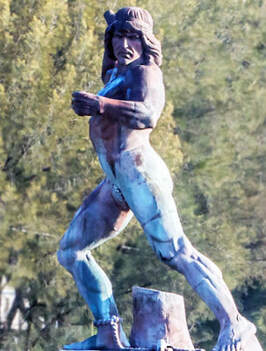
All went as planned until he tried to conquer Tlaxcala, a confederation of Nahua-speaking chiefdoms. Tlaxcala was one of many civilizations in Mesoamerica. It had a capital city, located at the archeological ruins of Cacaxtla, replete with its pyramids and ceremonial centers. They practiced the same religion and customs as the Aztecs. (Tlaxcala today has some of the best-preserved Mesoamerican murals.)
However, the Tlaxcaltecans were not an imperial nation like the Aztecs. The latter set out and conquered all of the surrounding civilizations and subjugated the Mixtec, the Olmec, the Tarascan, the Maya, among others. Tlaxcala, nestled high in the mountains east of Tenochtitlán, was another story. The Tlaxcaltecans maintained their independence and freedom from Aztec hegemony through the use of defensive fortifications and an excellent cadre of warriors, among them the legendary warrior, Tlahuicole.
When he was ultimately captured by the Aztecs, he was offered amnesty by Moctezuma II if he helped conquer the Tarascans, which he did. When the emperor asked him to take his sword against his homeland, he instead chose a ceremonial death for his honor and his country. Chained to a stone, he battled one Aztec warrior after another, killing many until exhaustion made him an easy kill. Tlaxcala never forgot. Today, it is Tlahuicole, not Cuauhtémoc, whom the Tlaxcaltecans revere.
When Cortés approached the borders of Tlaxcala, the council of chiefs, headed by Xicotenga the Elder, debated whether to confront the invaders or surrender. Many were fearful because of the horses. The giant “deer,” they said, became a single creature with the man. But Xicotenga’s son, Xicotenga the Younger, was unconvinced. These were mere men, he argued, and the deer were just animals unknown to them. The warrior argued that if a horse could be killed, then it was not some supernatural creature. Although the Tlaxcaltecans suffered large losses in the battle, Xicotenga killed a horse and turned the tide. Cortés sued for peace. His god charade was over.
The Tlaxcaltecans agreed to ally themselves with Spain on certain conditions, mainly retention of their territory and freedom from servitude and tribute. Spain for the most part honored their end of the contract. They did infringe on some territory, but Tlaxcala basically remained intact. The Tlaxcaltecans, unlike other indigenous peoples, were addressed as Don/Doña; they rode horses, wore boots, and given privileges reserved for Spaniards.
In 1591, the Spanish Crown asked the Tlaxcaltecans to colonize the hostile north and help subdue the local nomadic peoples. On July 9th, 1591, four hundred families, my grandmother’s forebears among them, departed northward. Every year, the people of Tlaxcala commemorated this event in the Festival of the Parting of 400 Families.
My grandmother’s people settled in the vicinity of Saltillo, Nueva Extremadura (Coahuila) and founded the town of San Esteban de Tlaxcala, and later she’d say that her family still had ancestral lands there. In 1800, a group of Tlaxcaltecans moved north, to the Villa of San Andres (Nava, Coahuila). The Villa de San Andres was first founded in 1753 but failed to take root and was essentially abandoned. In the waning days of Colonial Mexico, the Spanish crown determined to re-establish the town, most likely as a defensive settlement against the war-like, horse-riding Chichimecas (Apaches and Comanches, et al.).
Many of the men were killed by Chichimecas in ambushes and pitched battles. I’ve come across pages listing the dead of these battles. Some of the descriptions of the corpses are graphic accounts of mutilations and desecration of the dead. The nomadic Indians were fierce, brutal, and determined warriors, far from helpless victims of contemporary myths. Needless, to say, there was no love lost between the settlers and the Chichimecas. But, unlike others who, remembering the stories of their ancestors’ Indian wars as if they themselves had lived them, Felicitas never hated other Indians.
I always remember her being kind and generous to the Kickapoo whenever they---the Kickapoo--migrated back and forth from their land, Nacimiento, in Múzquiz and their lands in Texas. She was never openly affectionate or given to weeping like my grandfather who would cry if he sang a sad song. She had the taciturn manner of her native ancestors and retreated into her silences.
Sometimes, when she’d hear of another’s suffering, she’d murmur, “Pobre,” and seemed to drift back into the solitude of the forgone centuries of life in the harsh and unforgiving Extremadura, a land where time lost its significance, and all of the past seemed as if it were yesterday. Her own mother died at 28, and shortly thereafter her father was murdered. Shaped by sorrow, she is one of my heroes. From her I learned that despite hardship and violence, our hearts are still capable of love.
This all brings back the popular Mexican narratives. The fallacy of the Mexican (and, by extension, the Chicano) narrative is that it posits that our mestizaje is Aztec based, when it is diverse: Tarascan, Huichol, Tarahumara, Kickapoo, Maya, Otomi, Olmec, Toltec, and so on. The fallacy of all “race” based nationalistic narratives is, in fact, that they ignore the marginalized narratives, histories, and archeological evidence, which confirm that ethnic admixture was the norm.
The Tlaxcaltecans, for example, were a mixture of ancient Tlaxcaltecans, Otomis, and Olmecs. The Spanish were Celtic-Iberians, Phoenicians, Jews, Visigoths, Vandals, Moroccans, Arabs, Basques, Vikings, and Romans. It is fascinating to know our origins and take pride in the accomplishments of our ancestors. However, other peoples, too, are equally enthused and proud of their ancestors.
This factor of the human condition being equal regardless of our origins, we (I hope) are entering into a new era, one that moves away from identity politics. Myself, I identify with classic critical thinkers of all backgrounds who love exploring new ideas and are inclined to deconstruction of conventional constructs. These are my people of choice. As for our biological identity, the empirical data reveals that there’s only one raza cósmica: Homo sapiens. Felicitas Peña understood this from the collective memory and wisdom of her people.

Archives
June 2024
April 2024
February 2024
November 2023
October 2023
January 2023
December 2022
October 2022
August 2022
July 2022
June 2022
May 2022
March 2022
February 2022
December 2021
November 2021
October 2021
June 2021
April 2021
February 2021
January 2021
December 2020
November 2020
October 2020
September 2020
August 2020
July 2020
May 2020
April 2020
March 2020
February 2020
January 2020
December 2019
October 2019
August 2019
July 2019
May 2019
April 2019
March 2019
February 2019
January 2019
December 2018
October 2018
September 2018
August 2018
July 2018
June 2018
May 2018
April 2018
March 2018
February 2018
January 2018
December 2017
March 2017
December 2016
September 2016
September 2015
October 2013
February 2010
Categories
All
2018 WorldCon
American Indians
Anthology
Archive
A Writer's Life
Barrio
Beauty
Bilingüe
Bi Nacionalidad
Bi-nacionalidad
Border
Boricua
California
Calo
Cesar Chavez
Chicanismo
Chicano
Chicano Art
Chicano/a/x/e
Chicano Confidential
Chicano Literature
Chicano Movement
Chile
Christmas
Civil RIghts
Collective Memory
Colonialism
Column
Commentary
Creative Writing
Cuba
Cuban American
Cuento
Cultura
Culture
Current Events
Dominican American
Ecology
Editorial
Education
English
Español
Essay
Eulogy
Excerpt
Extrafiction
Extra Fiction
Family
Gangs
Gender
Global Warming
Guest Viewpoint
History
Holiday
Human Rights
Humor
Idenity
Identity
Immigration
Indigenous
Interview
La Frontera
Language
La Pluma Y El Corazón
Latin America
Latino Literature
Latino Sci-Fi
La Virgen De Guadalupe
Literary Press
Literatura
Low Rider
Maduros
Malinche
Memoir
Memoria
Mental Health
Mestizaje
Mexican American
Mexican Americans
Mexico
Migration
Movie
Murals
Music
Mythology
New Mexico
New Writer
Novel
Obituary
Our Other Voices
Peru/Peruvian Diaspora
Philosophy
Poesia
Poesia Politica
Poetry
Politics
Puerto Rican Diaspora
Puerto Rico
Race
Reprint
Review
Rodolfo "Corky" Gonzales
Romance
Science
Sci Fi
Sci-Fi
Short Stories
Short Story
Social Justice
Social Psychology
Sonny Boy Arias
South America
South Texas
Spain
Spanish And English
Special Feature
Speculative Fiction
Tertullian’s Corner
Texas
To Tell The Whole Truth
Trauma
Treaty Of Guadalupe Hidalgo
Walt Whitman
War
Welcome To My Worlds
William Carlos Williams
Women
Writing
Donate and Make Literature Happen
is published by the Somos En Escrito Literary Foundation,
a 501 (c) (3) non-profit, tax-exempt corporation. EIN 81-3162209

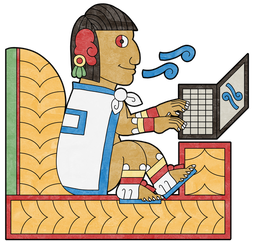
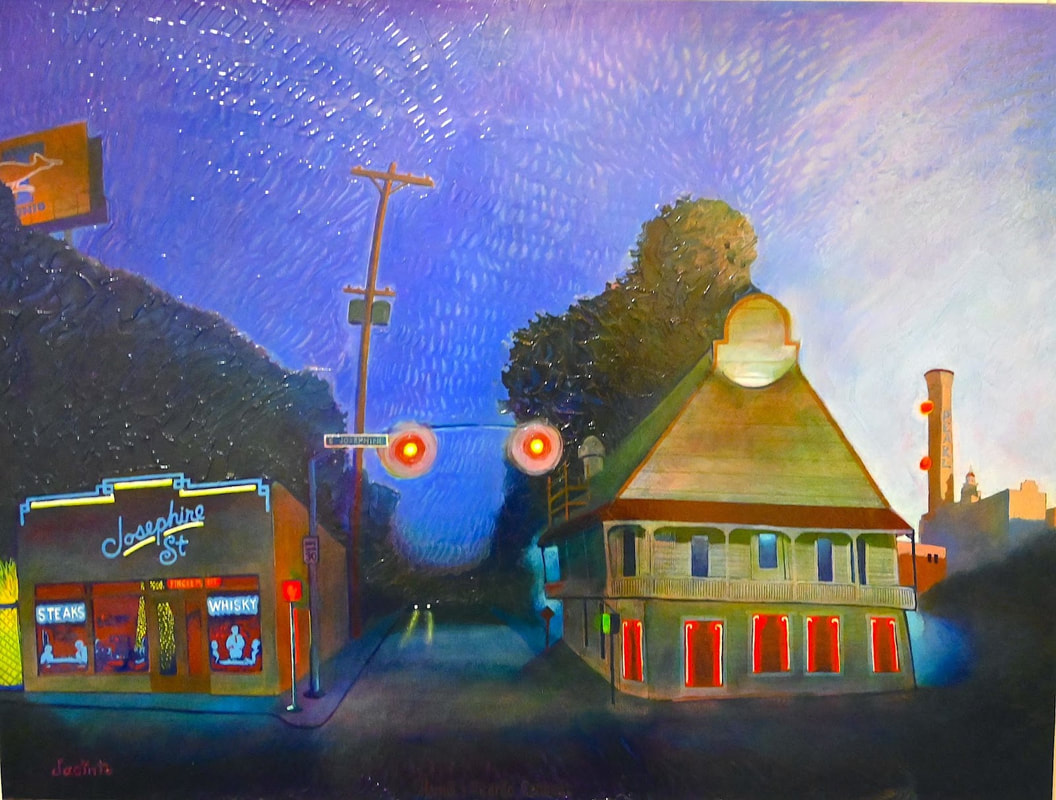
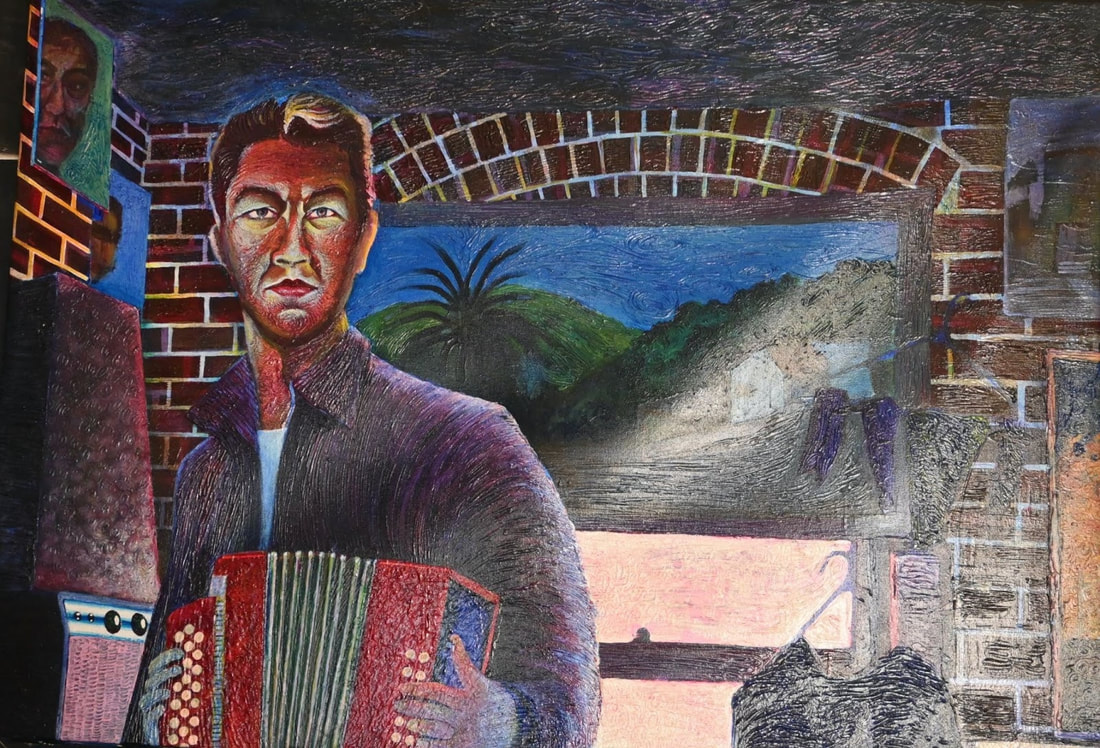
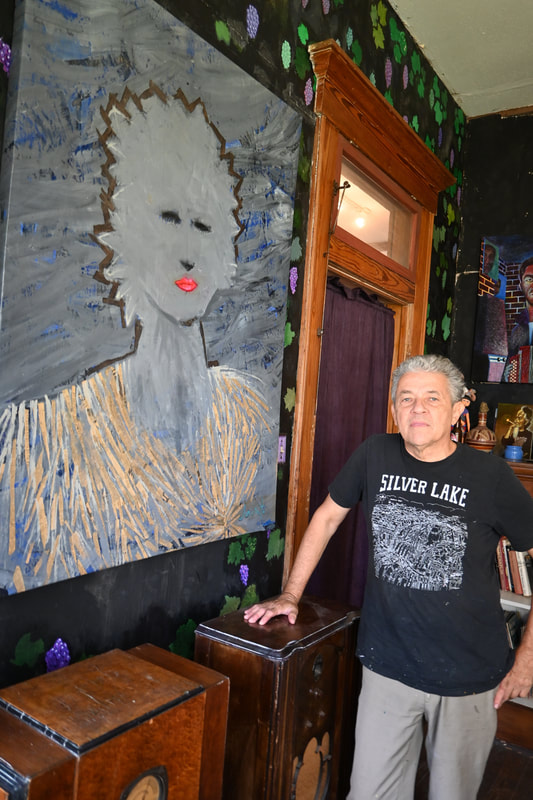
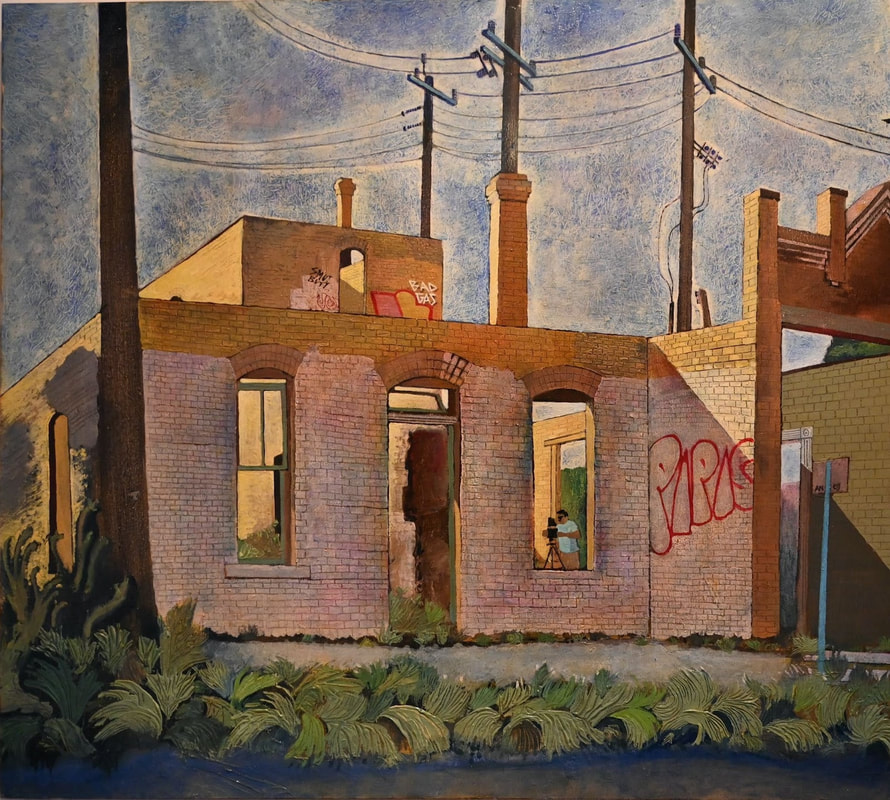
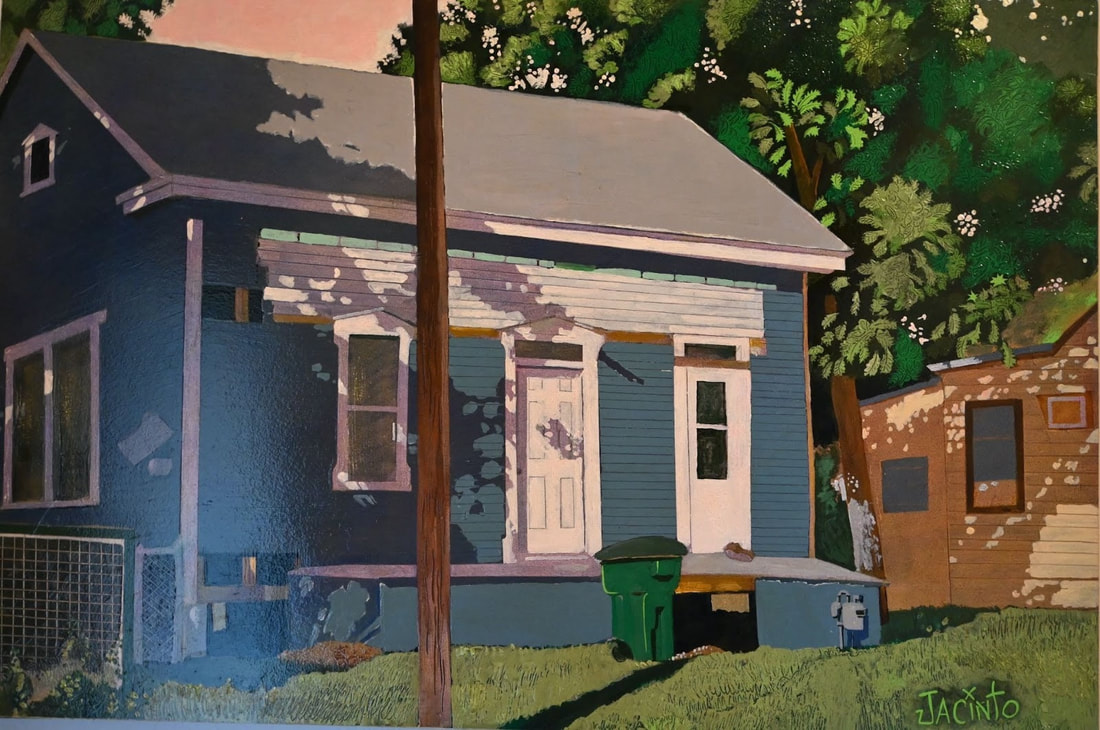

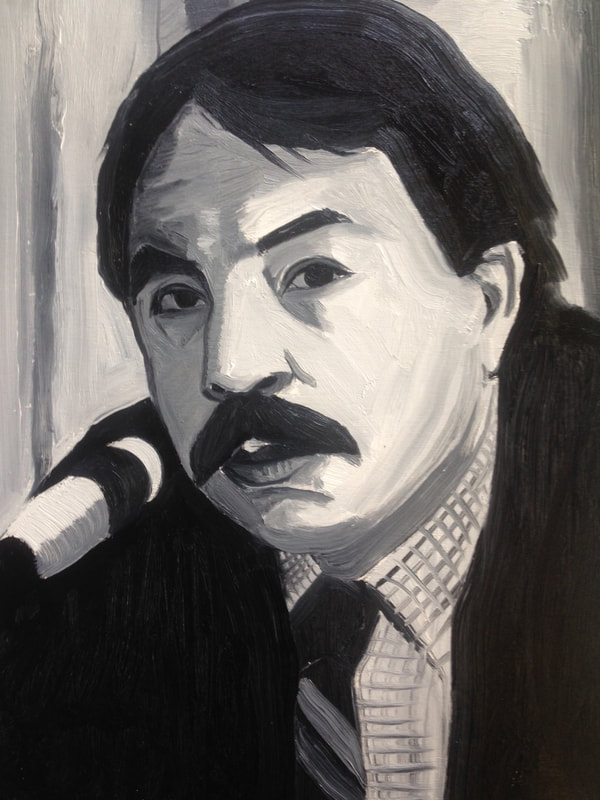
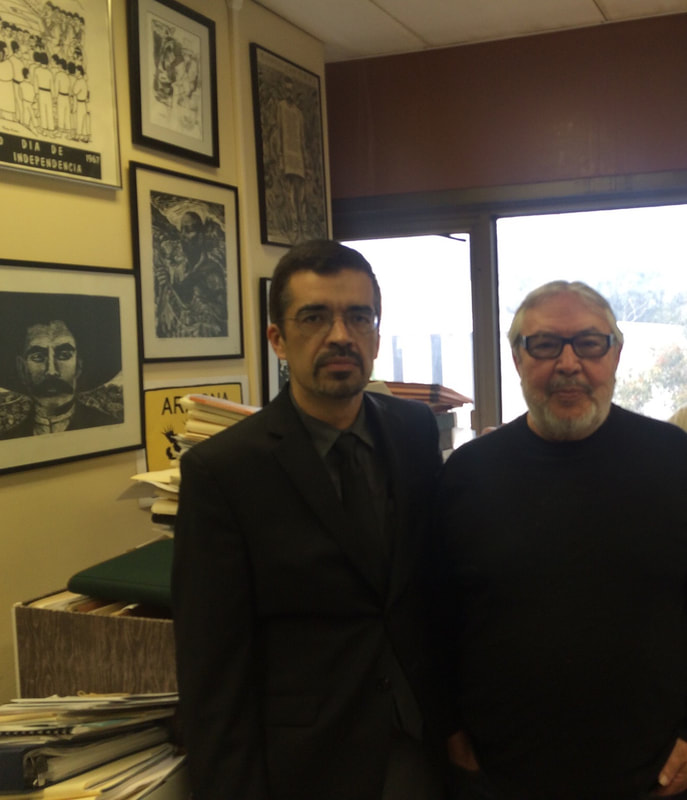
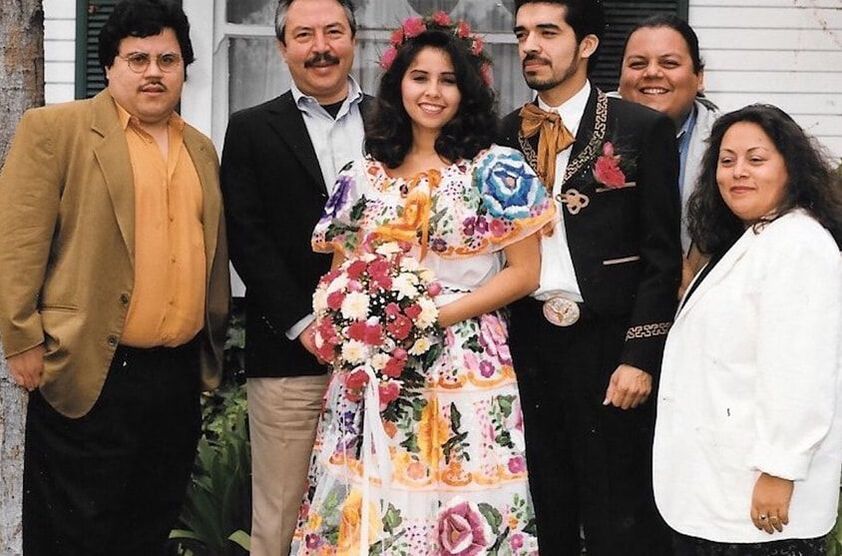
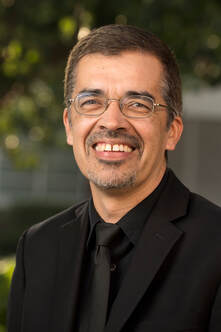
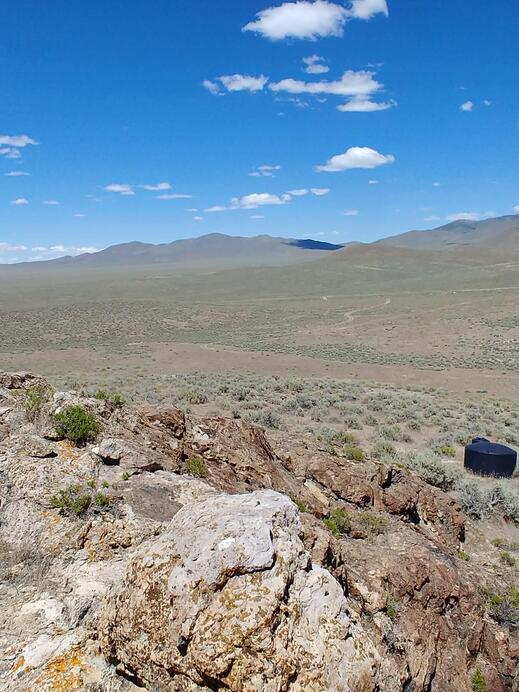
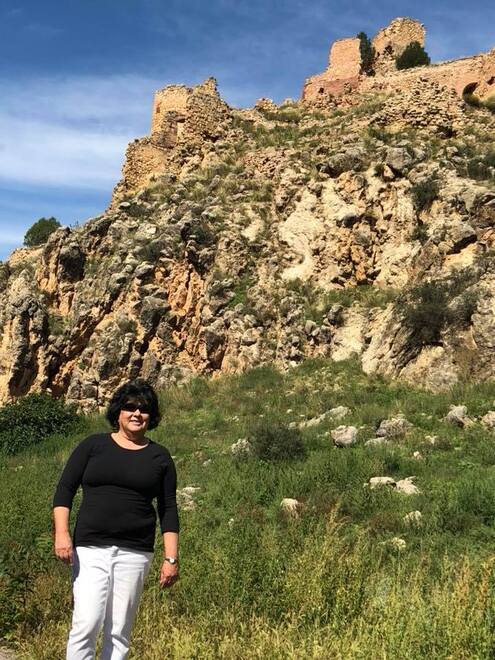
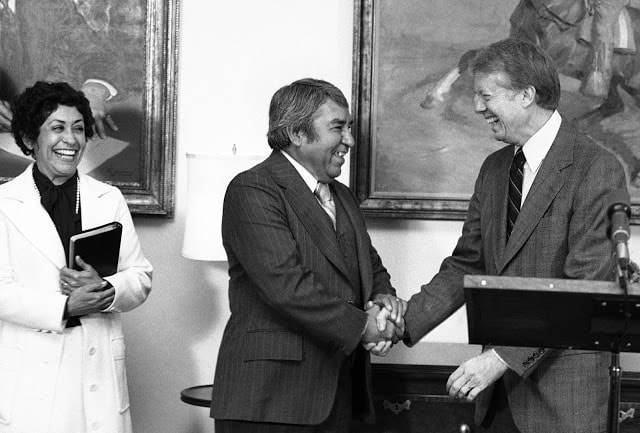
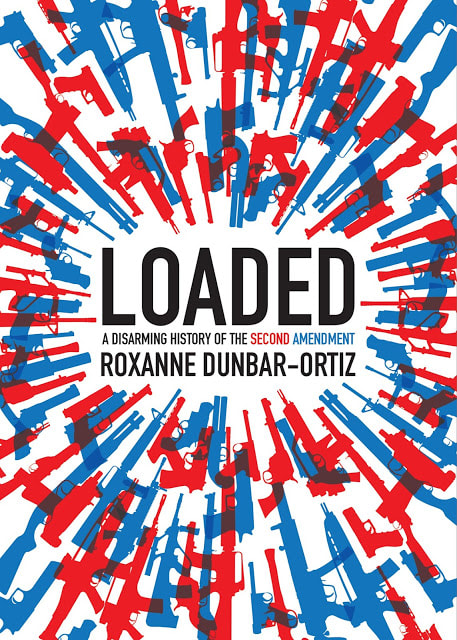
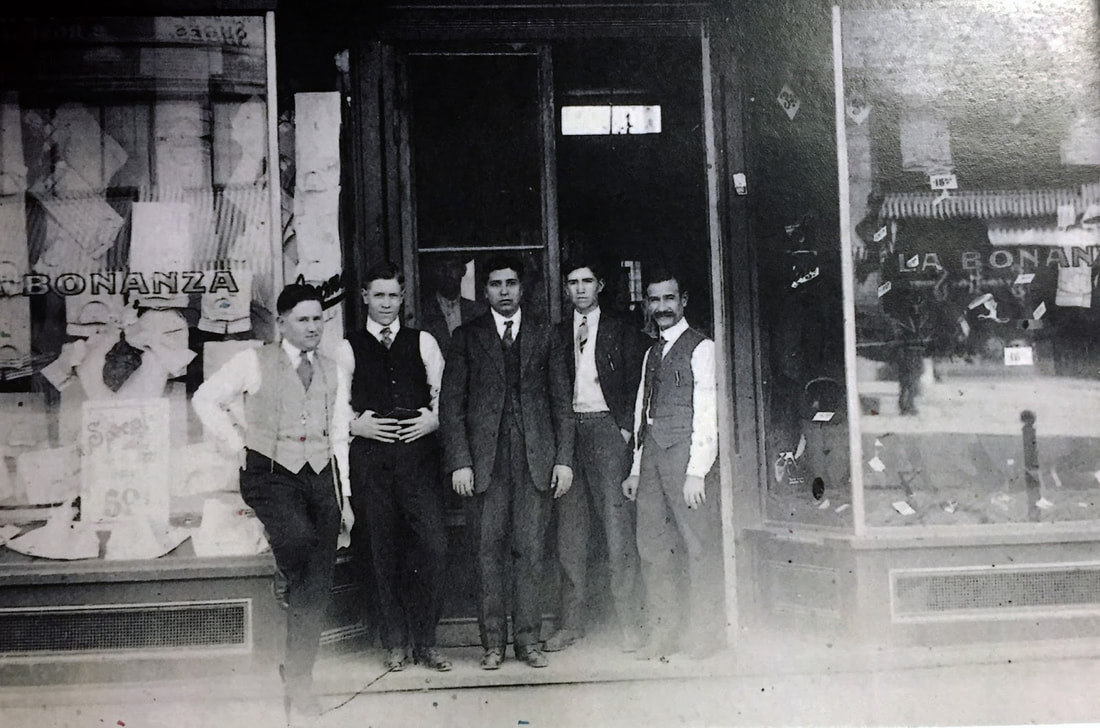
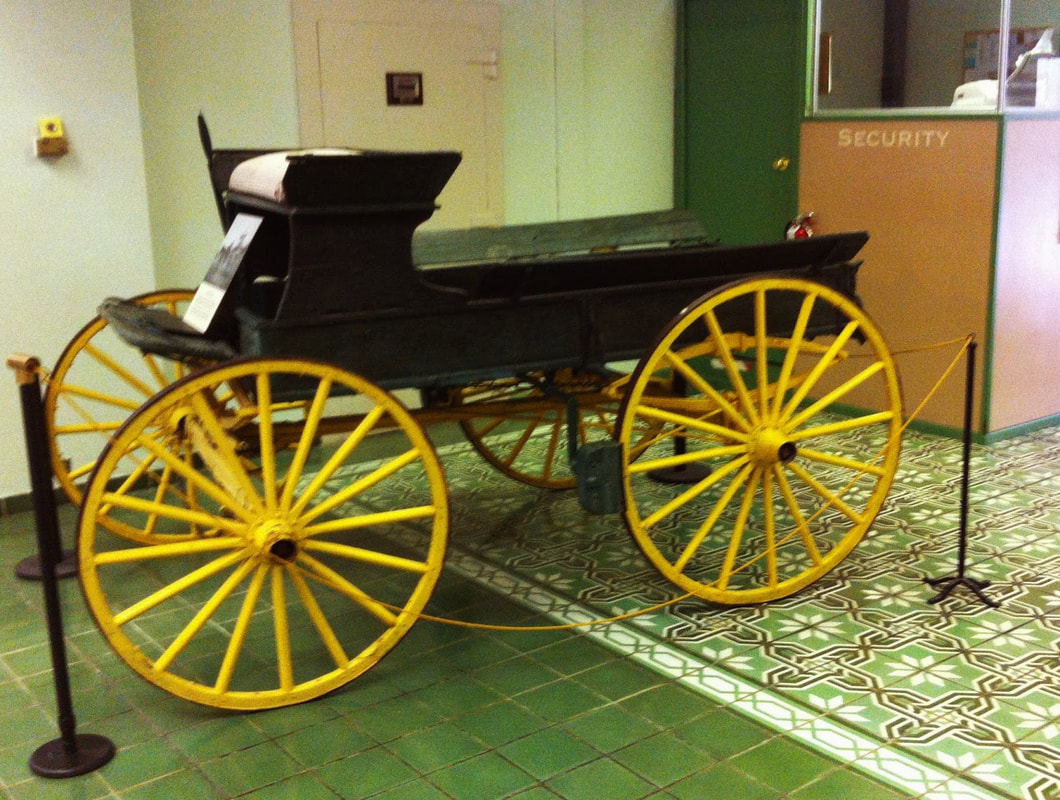
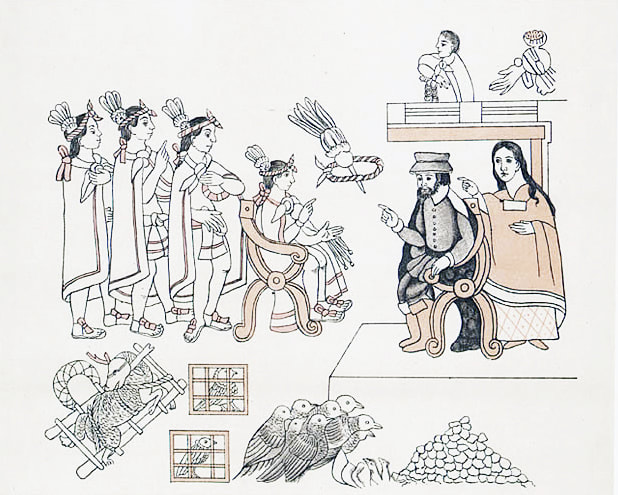
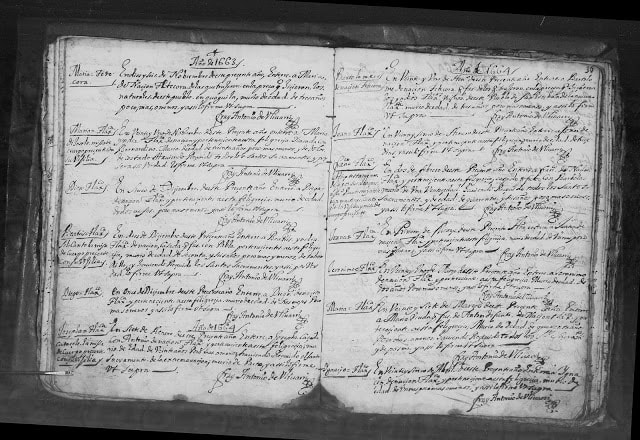
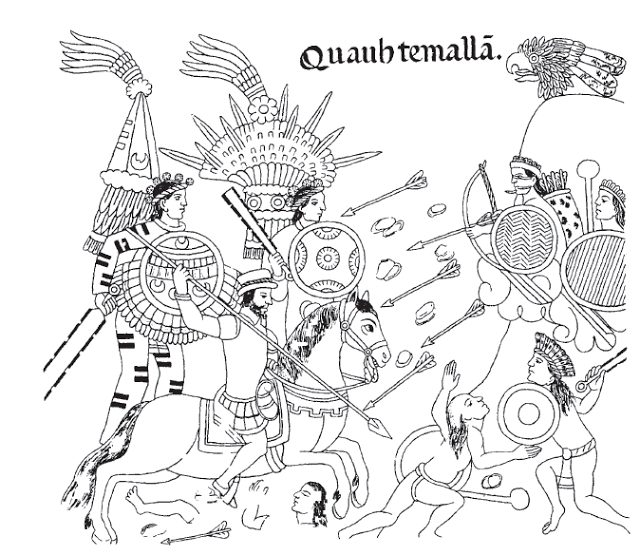
 RSS Feed
RSS Feed